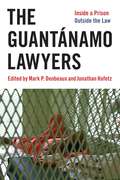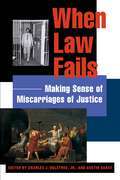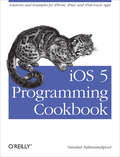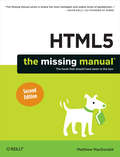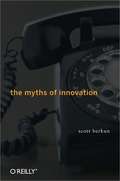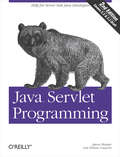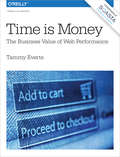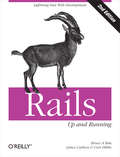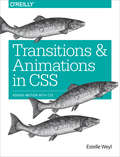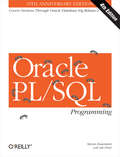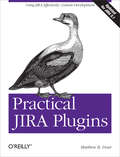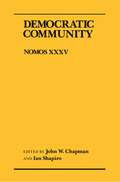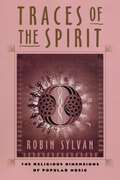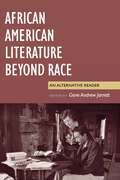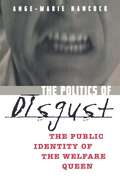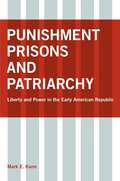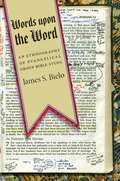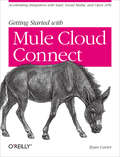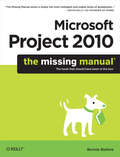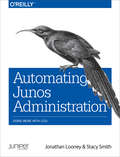- Table View
- List View
The Guantánamo Lawyers: Inside a Prison Outside the Law
by Jonathan HafetzThe stories of Guantánamo detainees, silenced and imprisoned without trial, as told by their lawyersFollowing the terrorist attacks of 9/11, the United States imprisoned more than seven hundred and fifty men at its naval base at Guantánamo Bay, Cuba. These men, ranging from teenage boys to men in their eighties from over forty different countries, were detained for years without charges, trial, and a fair hearing. Without any legal status or protection, they were truly outside the law: imprisoned in secret, denied communication with their families, and subjected to extreme isolation, physical and mental abuse, and, in some instances, torture.These are the detainees’ stories, told by their lawyers because the prisoners themselves were silenced. It took habeas counsel more than two years—and a ruling from the United States Supreme Court—to finally gain the right to visit and talk to their clients at Guantánamo. Even then, lawyers were forced to operate under severe restrictions designed to inhibit communication and envelop the prison in secrecy. In time, however, lawyers were able to meet with their clients and bring the truth about Guantánamo to the world.The Guantánamo Lawyers contains over one hundred personal narratives from attorneys who have represented detainees held at “GTMO” as well as at other overseas prisons, from Bagram Air Base in Afghanistan to secret CIA jails or “black sites.” Mark Denbeaux and Jonathan Hafetz—themselves lawyers for detainees—collected stories that cover virtually every facet of Guantánamo, and the litigation it sparked. Together, these moving, powerful voices create a historical record of Guantánamo’s legal, human, and moral failings, and provide a window into America’s catastrophic effort to create a prison beyond the law.An online archive, hosted by New York University Libraries, will be available at the time of publication and will contain the complete texts as well as other accounts contributed by Guantánamo lawyers. The documents will be freely available on the Internet for research, teaching, and non-commercial uses, and will be preserved indefinitely as a historical collection.
When Law Fails: Making Sense of Miscarriages of Justice (The Charles Hamilton Houston Institute Series on Race and Justice #3)
by Charles J. Ogletree Jr. Austin SaratSince 1989, there have been over 200 post-conviction DNA exonerations in the United States. On the surface, the release of innocent people from prison could be seen as a victory for the criminal justice system: the wrong person went to jail, but the mistake was fixed and the accused set free. A closer look at miscarriages of justice, however, reveals that such errors are not aberrations but deeply revealing, common features of our legal system.The ten original essays in When Law Fails view wrongful convictions not as random mistakes but as organic outcomes of a misshaped larger system that is rife with faulty eyewitness identifications, false confessions, biased juries, and racial discrimination. Distinguished legal thinkers Charles J. Ogletree, Jr., and Austin Sarat have assembled a stellar group of contributors who try to make sense of justice gone wrong and to answer urgent questions. Are miscarriages of justice systemic or symptomatic, or are they mostly idiosyncratic? What are the broader implications of justice gone awry for the ways we think about law? Are there ways of reconceptualizing legal missteps that are particularly useful or illuminating? These instructive essays both address the questions and point the way toward further discussion.When Law Fails reveals the dramatic consequences as well as the daily realities of breakdowns in the law’s ability to deliver justice swiftly and fairly, and calls on us to look beyond headline-grabbing exonerations to see how failure is embedded in the legal system itself. Once we are able to recognize miscarriages of justice we will be able to begin to fix our broken legal system.Contributors: Douglas A. Berman, Markus D. Dubber, Mary L. Dudziak, Patricia Ewick, Daniel Givelber, Linda Ross Meyer, Charles J. Ogletree, Jr., Austin Sarat, Jonathan Simon, and Robert Weisberg.
The Prophetic Tradition and Radical Rhetoric in America
by James DarseyThis expansive volume traces the rhetoric of reform across American history, examining such pivotal periods as the American Revolution, slavery, McCarthyism, and today's gay liberation movement. At a time when social movements led by religious leaders, from Louis Farrakhan to Pat Buchanan, are playing a central role in American politics, James Darsey connects this radical tradition with its prophetic roots.Public discourse in the West is derived from the Greek principles of civility, diplomacy, compromise, and negotiation. On this model, radical speech is often taken to be a sympton of social disorder. Not so, contends Darsey, who argues that the rhetoric of reform in America represents the continuation of a tradition separate from the commonly accepted principles of the Greeks. Though the links have gone unrecognized, the American radical tradition stems not from Aristotle, he maintains, but from the prophets of the Hebrew Bible.
iOS 5 Programming Cookbook: Solutions & Examples for iPhone, iPad, and iPod touch Apps (Oreilly And Associate Ser.)
by Vandad NahavandipoorNow you can overcome the vexing, real-life issues you confront when creating apps for the iPhone, iPad, or iPod Touch. By making use of more than 100 new recipes in this updated cookbook, you’ll quickly learn the steps necessary for writing complete iOS apps, whether they’re as simple as a music player or feature a complex mix of animations, graphics, multimedia, a database, and iCloud storage.If you’re comfortable with iOS SDK, this cookbook will teach you how to use hundreds of iOS techniques. Each recipe provides a clear solution with sample code that you can use right away.Use different approaches to construct a user interfaceDevelop location-aware appsGet working examples for implementing gesture recognizersPlay audio and video files and access the iPod libraryRetrieve contacts and groups from the Address BookDetermine camera availability and access the Photo LibraryCreate multitasking-aware appsMaintain persistent storage in your appsUse Event Kit to manage calendars and eventsLearn capabilities of the Core Graphics frameworkAccess the accelerometer and gyroscopeTake advantage of the iCloud service
HTML5: The Missing Manual
by Matthew MacDonaldHTML5 is more than a markup language—it’s a collection of several independent web standards. Fortunately, this expanded guide covers everything you need in one convenient place. With step-by-step tutorials and real-world examples, HTML5: The Missing Manual shows you how to build web apps that include video tools, dynamic graphics, geolocation, offline features, and responsive layouts for mobile devices.The important stuff you need to know:Structure web pages more effectively. Learn how HTML5 helps web design tools and search engines work smarter.Add audio and video without plugins. Build playback pages that work in every browser.Create stunning visuals with Canvas. Draw shapes, pictures, and text; play animations; and run interactive games.Jazz up your pages with CSS3. Add fancy fonts and eye-catching effects with transitions and animation.Design better web forms. Collect information from visitors more efficiently with HTML5 form elements.Build it once, run it everywhere. Use responsive design to make your site look good on desktops, tablets, and smartphones.Include rich desktop features. Build self-sufficient web apps that work offline and store the data users need.
The Myths of Innovation
by Scott BerkunHow do we know if a hot new technology will succeed or fail? Most of us, even experts, get it wrong all the time. We depend more than we realize on wishful thinking and romanticized ideas of history. In the new paperback edition of this fascinating book, a book that has appeared on MSNBC, CNBC, Slashdot.org, Lifehacker.com and in The New York Times, bestselling author Scott Berkun pulls the best lessons from the history of innovation, including the recent software and web age, to reveal powerful and suprising truths about how ideas become successful innovations -- truths people can easily apply to the challenges of today. Through his entertaining and insightful explanations of the inherent patterns in how Einstein’s discovered E=mc2 or Tim Berner Lee’s developed the idea of the world wide web, you will see how to develop existing knowledge into new innovations.Each entertaining chapter centers on breaking apart a powerful myth, popular in the business world despite it's lack of substance. Through Berkun's extensive research into the truth about innovations in technology, business and science, you’ll learn lessons from the expensive failures and dramatic successes of innovations past, and understand how innovators achieved what they did -- and what you need to do to be an innovator yourself. You'll discover:Why problems are more important than solutionsHow the good innovation is the enemy of the greatWhy children are more creative than your co-workersWhy epiphanies and breakthroughs always take timeHow all stories of innovations are distorted by the history effectHow to overcome people’s resistance to new ideasWhy the best idea doesn’t often winThe paperback edition includes four new chapters, focused on appling the lessons from the original book, and helping you develop your skills in creative thinking, pitching ideas, and staying motivated."For centuries before Google, MIT, and IDEO, modern hotbeds of innovation, we struggled to explain any kind of creation, from the universe itself to the multitudes of ideas around us. While we can make atomic bombs, and dry-clean silk ties, we still don’t have satisfying answers for simple questions like: Where do songs come from? Are there an infinite variety of possible kinds of cheese? How did Shakespeare and Stephen King invent so much, while we’re satisfied watching sitcom reruns? Our popular answers have been unconvincing, enabling misleading, fantasy-laden myths to grow strong."-- Scott Berkun, from the text"Berkun sets us free to change the world."-- Guy Kawasaki, author of Art of the StartScott was a manager at Microsoft from 1994-2003, on projects including v1-5 (not 6) of Internet Explorer. He is the author of three bestselling books, Making Things Happen, The Myths of Innovation and Confessions of a Public Speaker. He works full time as a writer and speaker, and his work has appeared in The New York Times, Forbes magazine, The Economist, The Washington Post, Wired magazine, National Public Radio and other media. He regularly contributes to Harvard Business Review and Bloomberg Businessweek, has taught creative thinking at the University of Washington, and has appeared as an innovation and management expert on MSNBC and on CNBC. He writes frequently on innovation and creative thinking at his blog: scottberkun.com and tweets at @berkun.
Java Servlet Programming: Help for Server Side Java Developers
by William Crawford Jason HunterServlets are an exciting and important technology that ties Java to the Web, allowing programmers to write Java programs that create dynamic web content.Java Servlet Programming covers everything Java developers need to know to write effective servlets. It explains the servlet lifecycle, showing how to use servlets to maintain state information effortlessly. It also describes how to serve dynamic web content, including both HTML pages and multimedia data, and explores more advanced topics like integrated session tracking, efficient database connectivity using JDBC, applet-servlet communicaton, interservlet communication, and internationalization. Readers can use the book's numerous real-world examples as the basis for their own servlets.The second edition has been completely updated to cover the new features of Version 2.2 of the Java Servlet API. It introduces chapters on servlet security and advanced communication, and also introduces several popular tools for easier integration of servlet technology with dynamic web pages. These tools include JavaServer Pages (JSP), Tea, XMLC, and the Element Construction Set.In addition to complete coverage of 2.2 specification, Java Servlet programming, 2nd Edition, also contains coverage of the new 2.3 final draft specification.
Google SketchUp: The Missing Manual (Missing Manual)
by Chris GroverIf you want to learn to create 3-D models using Google SketchUp, this Missing Manual is the ideal place to start. Filled with step-by-step tutorials, this entertaining, reader-friendly guide will have you creating detailed 3-D objects, including building plans, furniture, landscaping plans -- even characters for computer games -- in no time. Google SketchUp: The Missing Manual offers a hands-on tour of the program, with crystal-clear instructions for using every feature and lots of real-world examples to help you pick up the practical skills you need. Learn to use the basic tools, build and animate models, and place your objects in Google Earth. With this book, you will:Learn your way around the SketchUp workspace, and explore the differences between working in 2-D and 3-DBuild simple 3-D shapes, save them as reusable components, and use SketchUp's Outliner to show or hide them as you workTackle a complicated model building with lots of detail, and discover timesaving tools for using many componentsAnimate the model by creating an interior walkthrough of your buildingDress up your model with realistic material shading and shadows, and place it in Google EarthIt's easy to get started. Just download the program from Google.com, and follow the instructions in this book. You'll become a SketchUp master in a jiffy.
Time Is Money: The Business Value of Web Performance
by Tammy EvertsIf you want to convince your organization to conduct a web performance upgrade, this concise book will strengthen your case. Drawing upon her many years of web performance research, author Tammy Everts uses cases studies and other data to explain how web page speed and availability affect a host of business metrics. You’ll also learn how our human neurological need for quick, uncomplicated processes drives these metrics.Ideal for managers, this book’s case studies demonstrate how Walmart, Staples.com, Mozilla, and other organizations significantly improved conversion rates through simple upgrades. Find out why happy customers return, while frustrated users can send your metrics—and your domain—into a tailspin.You’ll explore:What happens neurologically when people encounter slow or interrupted processesHow page speed affects metrics in retail and other industries, from media sites to SaaS providersWhy internal applications are often slower than consumer apps, and how this hurts employee morale and productivityCommon performance problems and the various technologies created to fight themHow to pioneer new metrics, and create an organizational culture of performance
Rails: Lightning-Fast Web Development
by Curt Hibbs Lance Carlson Bruce TateIn just a matter of days, you can develop powerful web applications with Rails that once took weeks or months to produce with other web frameworks. If that sounds too good to be true, it isn't. Find out for yourself with Rails: Up and Running, the concise and popular book that not only explains how Rails works, but guides you through a complete test drive.Perfect for beginning web developers, this thoroughly revised edition teaches you the basics of installing and using Rails 2.1 and the Ruby scripting language. While Rails is praised for its simplicity, there are still a few tricky steps to master along the way. Rails: Up and Running offers lots of examples and covers just about everything you need to build functional Rails applications right away. Learn how to:Create simple database-backed applications, and build dynamic user-centric web pages using Ajax and RESTExploit the Rails service frameworks to send emails and implement web servicesMap data to an imperfect table, traverse complex relationships, and build custom findersUse techniques to solve common database performance problemsSee how fast you can go on Rails, and how reliable it's become with the stability and power of version 2.1. With Rails: Up and Running, you'll discover why Rails is a remarkable new way to build database-driven web applications.
Transitions and Animations in CSS: Adding Motion with CSS
by Estelle WeylAdd life and depth to your web applications and improve user experience through the discrete use of CSS transitions and animations. With this concise guide, you’ll learn how to make page elements move or change in appearance, whether you want to realistically bounce a ball, gradually expand a drop-down menu, or simply bring attention to an element when users hover over it.Short and deep, this book is an excerpt from the upcoming fourth edition of CSS: The Definitive Guide. When you purchase either the print or the ebook edition of Transitions and Animations in CSS, you’ll receive a discount on the entire Definitive Guide once it’s released. Why wait? Learn how to make your web pages come alive today.Understand and learn how to implement Disney’s 12 principles of cartoon animationLearn which CSS properties you can animate and use in transitionsApply CSS’s four transition properties and nine animation properties to your CSS elementsUse CSS keyframe animations to granularly control an element’s property valuesLearn details that will save you hours of debugging and megabytes of unnecessary JavaScript
Oracle PL/SQL Programming
by Steven Feuerstein Bill PribylFor the past ten years, O'Reilly's Oracle PL/SQL Programming has been the bestselling book on PL/SQL, Oracle's powerful procedural language. Packed with examples and helpful recommendations, the book has helped everyone--from novices to experienced developers, and from Oracle Forms developers to database administrators--make the most of PL/SQL.The fourth edition is a comprehensive update, adding significant new content and extending coverage to include the very latest Oracle version, Oracle Database 10g Release 2. It describes such new features as the PL/SQL optimizing compiler, conditional compilation, compile-time warnings, regular expressions, set operators for nested tables, nonsequential collections in FORALL, the programmer-defined quoting mechanism, the ability to backtrace an exception to a line number, a variety of new built-in packages, and support for IEEE 754 compliant floating-point numbers.The new edition adds brand-new chapters on security (including encryption, row-level security, fine-grained auditing, and application contexts), file, email, and web I/O (including the built-in packages DBMS_OUTPUT, UTL_FILE, UTL_MAIL, UTL_SMTP, and UTL_HTTP) and globalization and localization.Co-authored by the world's foremost PL/SQL authority, Steven Feuerstein, this classic reference provides language syntax, best practices, and extensive code, ranging from simple examples to complete applications--making it a must-have on your road to PL/SQL mastery. A companion web site contains many more examples and additional technical content for enhanced learning.
Practical JIRA Plugins: Using JIRA Effectively: Custom Development
by Matthew B. DoarOne advantage of using JIRA for issue tracking, bug tracking, or project management is the ability to extend this tool with hundreds of plugins from the JIRA community. In this concise book, software toolsmith Matt Doar—the author of Practical JIRA Administration—shows you how to create and maintain your own JIRA plugins to meet the specific needs of a project.This book uses detailed examples to clarify some of the more confusing aspects of JIRA plugins, and serves as an ideal supplement to the extensive documentation already available.Use JIRA’s Plugin SDK, and learn several aspects common to all pluginsCreate your own custom field type, using a JIRA pluginDelve into advanced aspects of custom field plugins, and discover how searching for values in custom fields worksCreate JIRA plugins to use with workflows, and learn about conditions, validators, and post-functionsStore data using the PropertySet interface and the Active Objects pluginUpgrade a plugin and upload it to Atlassian Plugin Exchange (PAC)
Democratic Community: Nomos XXXV (NOMOS - American Society for Political and Legal Philosophy #28)
by Ian Shapiro John W. ChapmanA state-of-the-art meditation on relations, theoretical and practical, among a familiar triad of themes: comunitarianism, liberalism, and democracy.--American Political Science Review A collection of distinguished contributors, from a wide range of disciplines, examine the implications of the resurgence of interest in community. The chapters in Democratic Community consider the fundamental issues that divide liberals and communitarians, as well as the structure of communities, the roles of freedom and democratic institutions in sustaining one another, the place of a democratic civil society in a democratic polity, and the contributions of feminist thinking.This thirty-fifth volume in the American Society of Political and Legal Philosophy series is devoted, as is each volume in the series, to a single topic-- in this case, the implications for human nature and democratic theory of the resurgence of interest in community. Democratic Community deals not only with fundamental issues that divide liberals and communitarians, but is also concerned with the structure of communities, the roles of freedom and democratic institutions in sustaining one another, the place of a democratic civil society in a democratic polity, and the contributions of feminist thinking to the great debate. The collection of distinguished contributors, from a wide range of disciplines, includes: Richard J. Arneson (University of California, San Diego), Jean Baechler (University of Paris, Sorbonne), Christopher J. Berry (University of Glasgow), Robert A. Dahl (Yale University), Martin P. Golding (Duke University), Carol C. Gould (Stevens Institute of Technology), Amy Gutmann (Princeton University), Jane Mansbridge (Northwestern University), Kenneth Minogue (London School of Economics), Robert C. Post (University of California, Berkeley), David A. J. Richards (New York University), Gerald N. Rosenberg (University of Chicago), Bruce K. Rutherford (Yale University), Alan Ryan (Princeton University), and Carmen Sirianni (Brandeis University).
Traces of the Spirit: The Religious Dimensions of Popular Music
by Robin Sylvan"Sylvan's thesis furnishes far more of the same valued experiences than is usually realized: ritual activity, communal ceremony, a philosophy and worldview, a code for living one's life, a cultural identity, a social structure, a sense of belonging, and crucially, Sylvan argues encounters with the numinous."-Journal of Religion Most studies of the religious significance of popular music focus on music lyrics, offering little insight into the religious aspects of the music itself. Traces of the Spirit examines the religious dimensions of popular music subcultures, charting the influence and religious aspects of popular music in mainstream culture today and analyzing the religious significance of the audience's experiences, rituals, and worldviews. Sylvan contends that popular music subcultures serve the function of religious communities and represent a new and significant religious phenomenon. Drawing on ethnographic fieldwork using interviews and participant observation, Sylvan examines such subcultures as the Deadheads, raves and their participants, metalheads, and Hip Hop culture. Based on these case studies, he offers a comprehensive theoretical framework in which to study music and popular culture. In addition, he traces the history of West African possession religion from Africa to the diaspora to its integration into American popular music in such genres as the blues, rock and roll, and contemporary musical youth subcultures.
Anxious Parents: A History of Modern Childrearing in America
by Peter N. StearnsAn examination into the history of modern parentingThe nineteenth and twentieth centuries saw a dramatic shift in the role of children in American society and families. No longer necessary for labor, children became economic liabilities and twentieth-century parents exhibited a new level of anxiety concerning the welfare of their children and their own ability to parent effectively. What caused this shift in the ways parenting and childhood were experienced and perceived? Why, at a time of relative ease and prosperity, do parents continue to grapple with uncertainty and with unreasonable expectations of both themselves and their children? Peter N. Stearns explains this phenomenon by examining the new issues the twentieth century brought to bear on families. Surveying popular media, "expert” childrearing manuals, and newspapers and journals published throughout the century, Stearns shows how schooling, physical and emotional vulnerability, and the rise in influence of commercialism became primary concerns for parents. The result, Stearns shows, is that contemporary parents have come to believe that they are participating in a culture of neglect and diminishing standards. Anxious Parents: A Modern History of Childrearing in America shows the reasons for this belief through an historic examination of modern parenting.
Global Feminism: Transnational Women's Activism, Organizing, and Human Rights
by Myra Marx Ferree Aili Mari TrippExplores the social and political developments that have energized movements of global feminismIncreasingly feminists around the world have successfully campaigned for recognition of women's full personhood and empowerment. Global Feminism explores the social and political developments that have energized this movement. Drawn from an international group of scholars and activists, the authors of these original essays assess both the opportunities that transnationalism has created and the tensions it has inadvertently fostered. By focusing on both the local and global struggles of today's feminist activists this important volume reveals much about women's changing rights, treatment and impact in the global world.Contributors: Melinda Adams, Aida Bagic, Yakin Ertürk, Myra Marx Ferree, Amy G. Mazur, Dorothy E. McBride, Hilkka Pietilä, Tetyana Pudrovska, Margaret Snyder, Sarah Swider, Aili Mari Tripp, Nira Yuval-Davis.
African American Literature Beyond Race: An Alternative Reader
by Gene Andrew JarrettIt is widely accepted that the canon of African American literature has racial realism at its core: African American protagonists, social settings, cultural symbols, and racial-political discourse. As a result, writings that are not preoccupied with race have long been invisible—unpublished, out of print, absent from libraries, rarely discussed among scholars, and omitted from anthologies.However, some of our most celebrated African American authors—from Zora Neale Hurston and Richard Wright to James Baldwin and Toni Morrison—have resisted this canonical rule, even at the cost of critical dismissal and commercial failure. African American Literature Beyond Race revives this remarkable literary corpus, presenting sixteen short stories, novelettes, and excerpts of novels-from the postbellum nineteenth century to the late twentieth century-that demonstrate this act of literary defiance. Each selection is paired with an original introduction by one of today's leading scholars of African American literature, including Hazel V. Carby, Gerald Early, Mae G. Henderson, George Hutchinson, Carla Peterson, Amritjit Singh, and Werner Sollors.By casting African Americans in minor roles and marking the protagonists as racially white, neutral, or ambiguous, these works of fiction explore the thematic complexities of human identity, relations, and culture. At the same time, they force us to confront the basic question, “What is African American literature?”Stories by: James Baldwin, Octavia E. Butler, Samuel R. Delany, Paul Laurence Dunbar, Frances Ellen Watkins Harper, Chester B. Himes, Zora Neale Hurston, Nella Larsen, Toni Morrison, Ann Petry, Wallace Thurman, Jean Toomer, Frank J. Webb, Richard Wright, and Frank Yerby.Critical Introductions by: Hazel V. Carby, John Charles, Gerald Early, Hazel Arnett Ervin, Matthew Guterl, Mae G. Henderson, George B. Hutchinson, Gene Jarrett, Carla L. Peterson, Amritjit Singh, Werner Sollors, and Jeffrey Allen Tucker.
The Politics of Disgust: The Public Identity of the Welfare Queen
by Ange-Marie HancockWinner of the 2006 Race, Ethnicity, and Politics Organized Section Best First Book Award from the American Political Science Association Winner of the 2006 W.E.B. DuBois Book Award from the National Conference of Black Political Scientists Ange-Marie Hancock argues that longstanding beliefs about poor African American mothers were the foundation for the contentious 1996 welfare reform debate that effectively "ended welfare as we know it." By examining the public identity of the so-called welfare queen and its role in hindering democratic deliberation, The Politics of Disgust shows how stereotypes and politically motivated misperceptions about race, class and gender were effectively used to instigate a politics of disgust. The ongoing role of the politics of disgust in welfare policy is revealed here by using content analyses of the news media, the 1996 congressional floor debates, historical evidence and interviews with welfare recipients themselves. Hancock's incisive analysis is both compelling and disturbing, suggesting the great limits of today's democracy in guaranteeing not just fair and equitable policy outcomes, but even a fair chance for marginalized citizens to participate in the process.
Human Nature
by Alice AndersonHuman Nature explores, both seductively and horrificly, the redemptive possibilities found in an American girlhood gone wrong. Every one of Anderson's poems tells a story-dangerous, sensuous, sometimes crazy, sometimes sacred tales that take us into the heartbreaking reality and strangeness of a little girl who grew up the woman of the house; at once drink-maker, showpiece, secret-keeper, and object of lust. The terrain of incest and violence sets itself out on the page so subtely and plainly that the poems become mere containers for these extremes, a kind of prayer. Where formal grace might seem impossible, Anderson sings. And this is why the book -with all its darkness and danger-is, in the end, an affirmative one. The poems rise out of childhood's sorrows into a womanhood filled with the past, hell-bent on the future, and ready for a fight. In haunting, elegant verse, Anderson enters into the truth of experience. Through it all, the poems come to embrace those universal illuminations that arise out of--or even because of--suffering.
Punishment, Prisons, and Patriarchy: Liberty and Power in the Early Republic
by Mark E. KannPunishment, Prisons, and Patriarchy tells the story of how first-generation Americans coupled their legacy of liberty with a penal philosophy that promoted patriarchy, especially for marginal Americans. American patriots fought a revolution in the name of liberty. Their victory celebrations barely ended before leaders expressed fears that immigrants, African Americans, women, and the lower classes were prone to vice, disorder, and crime. This spurred a generation of penal reformers to promote successfully the most systematic institution ever devised for stripping people of liberty: the penitentiary.Today, Americans laud liberty but few citizens contest the legitimacy of federal, state, and local government authority to incarcerate 2 million people and subject another 4.7 million probationers and parolees to scrutiny, surveillance, and supervision. How did classical liberalism aid in the development of such expansive penal practices in the wake of the War of Independence?
Words upon the Word: An Ethnography of Evangelical Group Bible Study
by James S. BieloEvangelical Bible study groups are the most prolific type of small group in American society, with more than 30 million Protestants gathering every week for this distinct purpose, meeting in homes, churches, coffee shops, restaurants, and other public and private venues across the country. What happens in these groups? How do they help shape the contours of American Evangelical life? While more public forms of political activism have captured popular and scholarly imaginations, it is in group Bible study that Evangelicals reflect on the details of their faith. Here they become self-conscious religious subjects, sharing the intimate details of life, interrogating beliefs and practices, and articulating their version of Christian identity and culture.In Words upon the Word, James S. Bielo draws on over nineteen months of ethnographic work with five congregations to better understand why group Bible study matters so much to Evangelicals and for Evangelical culture. Through a close analysis of participants' discourse, Bielo examines the defining themes of group life—from textual interpretation to spiritual intimacy and the rehearsal of witnessing. Bielo's approach allows these Evangelical groups to speak for themselves, illustrating Bible study's uniqueness in Evangelical life as a site of open and critical dialogue. Ultimately, Bielo's ethnography sheds much needed light on the power of group Bible study for the ever-evolving shape of American Evangelicalism.
Getting Started with Mule Cloud Connect: Accelerating Integration with SaaS, Social Media, and Open APIs
by Ryan CarterConnect your enterprise to a wide range of SaaS platforms, Open APIs, and social networks quickly and without difficulty. Through step-by-step instructions and numerous real-world examples, this concise guide shows you how to seamlessly integrate the external services you need with Mule ESB and its powerful Cloud Connect toolset.You’ll learn how to use service-specific connectors for many popular APIs—including Salesforce, Twitter, LinkedIn, and Twilio—through easy-to-learn abstractions. If Mule doesn’t have a connector for the resource you need, you’ll learn how to build your own. You’ll discover how easy it is to reach beyond the enterprise firewall for a host of Internet resources.Discover the advantages of using Mule Cloud Connect over typical web service clients and protocolsLearn how Cloud Connectors eliminate the need to understand the underlying API of each serviceGet started with the latest real-time technologies, including REST, WebHooks, and Streaming APIsIntegrate OAuth secure APIs and understand their role in authorization and information sharingDelve into advanced topics such as multi-tenancy and connection managementBuild your own custom connectors with the Mule DevKit
Microsoft Project 2010: The Missing Manual (The\missing Manual Ser.)
by Bonnie BiaforeMicrosoft Project is brimming with features to help you manage any project, large or small. But learning the software is only half the battle. What you really need is real-world guidance: how to prep your project before touching your PC, which Project tools work best, and which ones to use with care. This book explains it all, helping you go from project manager to project master.Get a project management primer. Discover what it takes to handle a project successfullyLearn the program inside out. Get step-by-step instructions for Project Standard and Project ProfessionalBuild and refine your plan. Put together your team, schedule, and budgetAchieve the results you want. Build realistic schedules, and learn how to keep costs under controlTrack your progress. Measure your performance, make course corrections, and manage changesUse Project's power tools. Customize Project's features and views, and transfer info directly between Project and other programs
Automating Junos Administration: Doing More with Less
by Stacy Smith Jonathan LooneyHow can you grow and maintain a reliable, flexible, and cost-efficient network in the face of ever-increasing demands? With this practical guide, network engineers will learn how to program Juniper network devices to perform day-to-day tasks, using the automation features of the Junos OS.Junos supports several automation tools that provide powerful solutions to common network automation tasks. Authors Jonathan Looney and Stacy Smith, senior testing engineers at Juniper, will help you determine which tools work best for your particular network requirements. If you have experience with Junos, this book will show you how automation can make a big difference in the operation of your existing network.Manage Junos software with remote procedure calls and a RESTful APIRepresent devices as Python objects and manage them with Python’s PyEZ packageCustomize Junos software to detect and block commits that violate your network standardsDevelop custom CLI commands to present information the way you wantProgram Junos software to automatically respond to network eventsRapidly deploy new Junos devices into your network with ZTP and Netconify toolsLearn how to use Ansible or Puppet to manage Junos software
